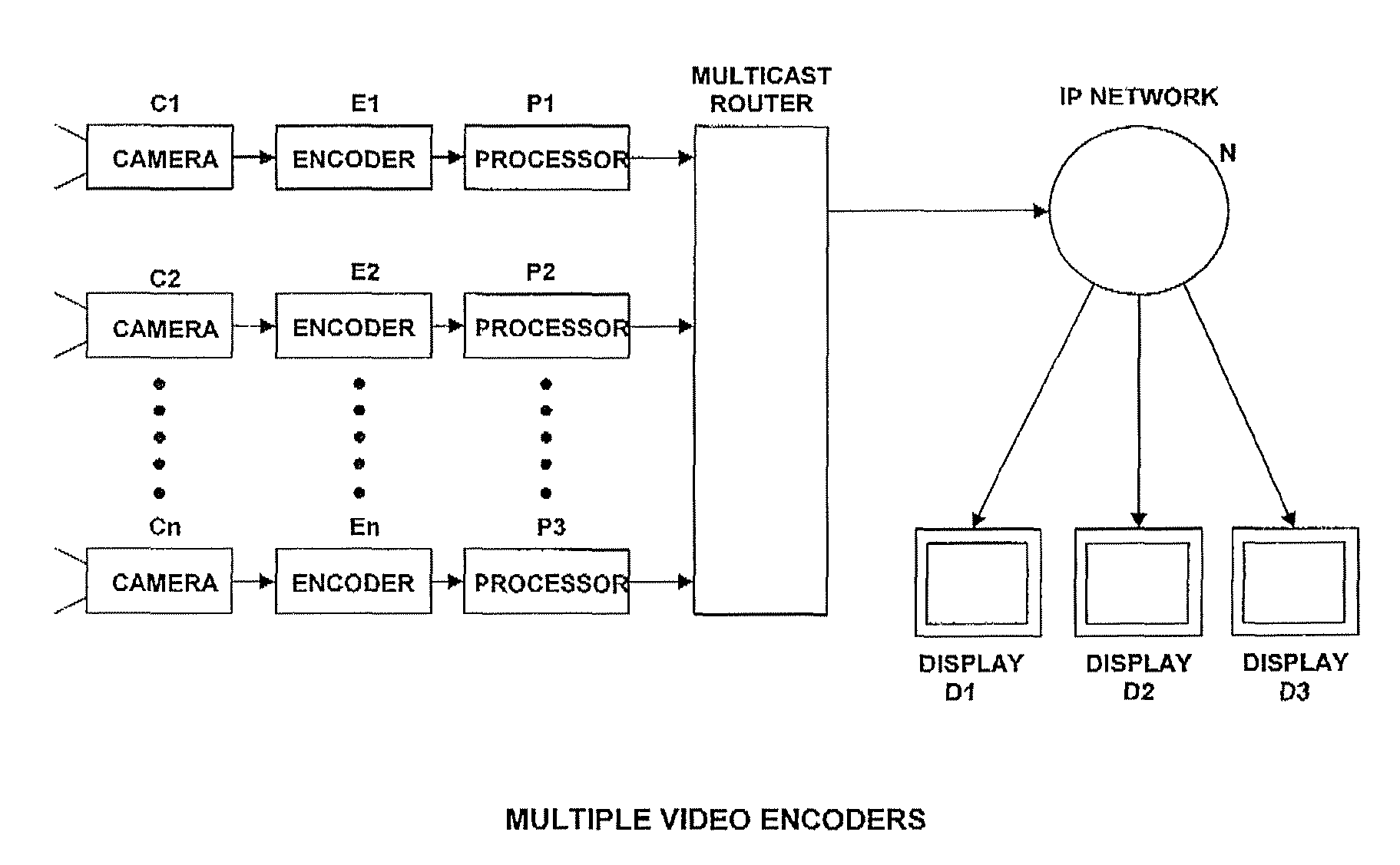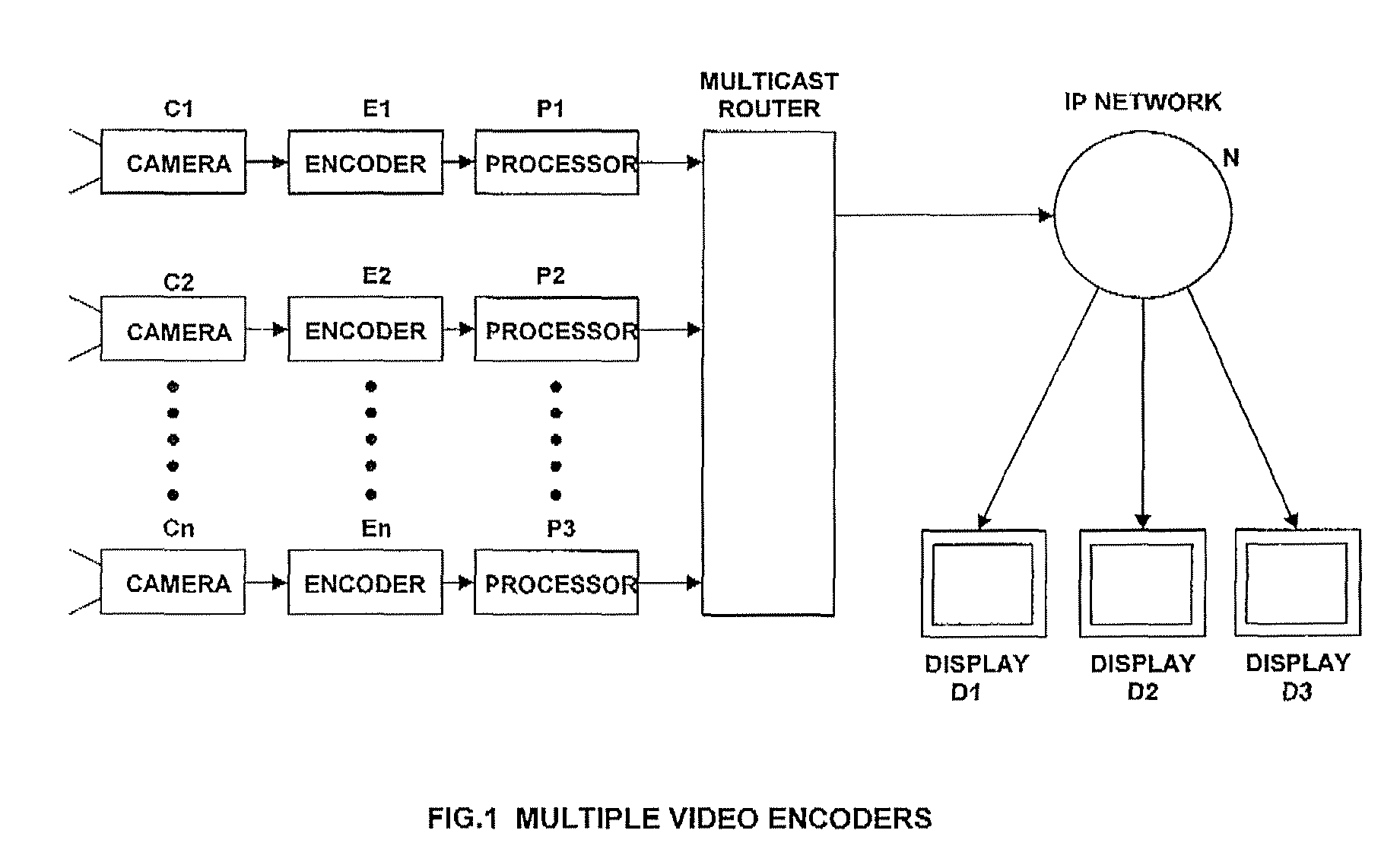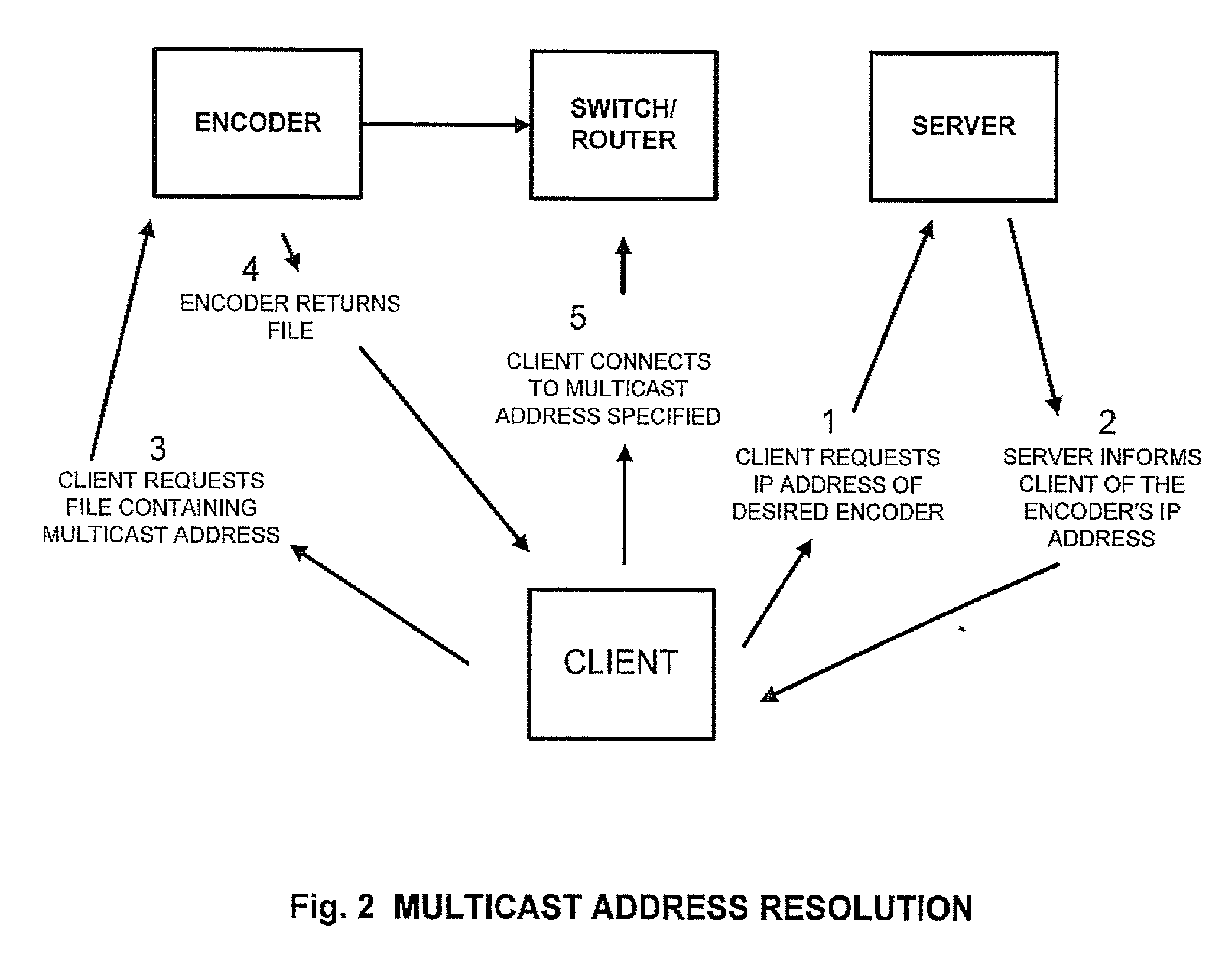Multiple Video Display Configurations & Bandwidth Conservation Scheme for Transmitting Video Over a Network
a video display and network technology, applied in the field of digital video transmission systems, can solve the problems of incompatible concept, inability to support continuous source playback, fundamentally incompatible time stamping mechanism used by media players, etc., to prevent network congestion and demand network bandwidth
- Summary
- Abstract
- Description
- Claims
- Application Information
AI Technical Summary
Benefits of technology
Problems solved by technology
Method used
Image
Examples
Embodiment Construction
[0031] The video surveillance system of the subject invention is specifically adapted for distributing digitized camera video on a real-time or near real-time basis over a LAN and / or a WAN. As shown in FIG. 1, the system uses a plurality of video cameras C1, C2 . . . Cn, disposed around a facility to view scenes of interest. Each camera captures the desired scene, digitizes the resulting video signal at a dedicated encoder module E1, E2 . . . En, respectively, compresses the digitized video signal at the respective compressor P1, P2 . . . Pn, and sends the resulting compressed digital video stream to a multicast address router R. One or more display stations D1, D2 . . . Dn may thereupon view the captured video via the intervening network N. The network may be hardwired or wireless, or a combination, and may either a Local Area Network (LAN) or a Wide Area Network (WAN), or both.
[0032] The preferred digital encoders E1, E2 . . . En produce industry-standard MPEG-1 digital video str...
PUM
 Login to View More
Login to View More Abstract
Description
Claims
Application Information
 Login to View More
Login to View More - R&D
- Intellectual Property
- Life Sciences
- Materials
- Tech Scout
- Unparalleled Data Quality
- Higher Quality Content
- 60% Fewer Hallucinations
Browse by: Latest US Patents, China's latest patents, Technical Efficacy Thesaurus, Application Domain, Technology Topic, Popular Technical Reports.
© 2025 PatSnap. All rights reserved.Legal|Privacy policy|Modern Slavery Act Transparency Statement|Sitemap|About US| Contact US: help@patsnap.com



